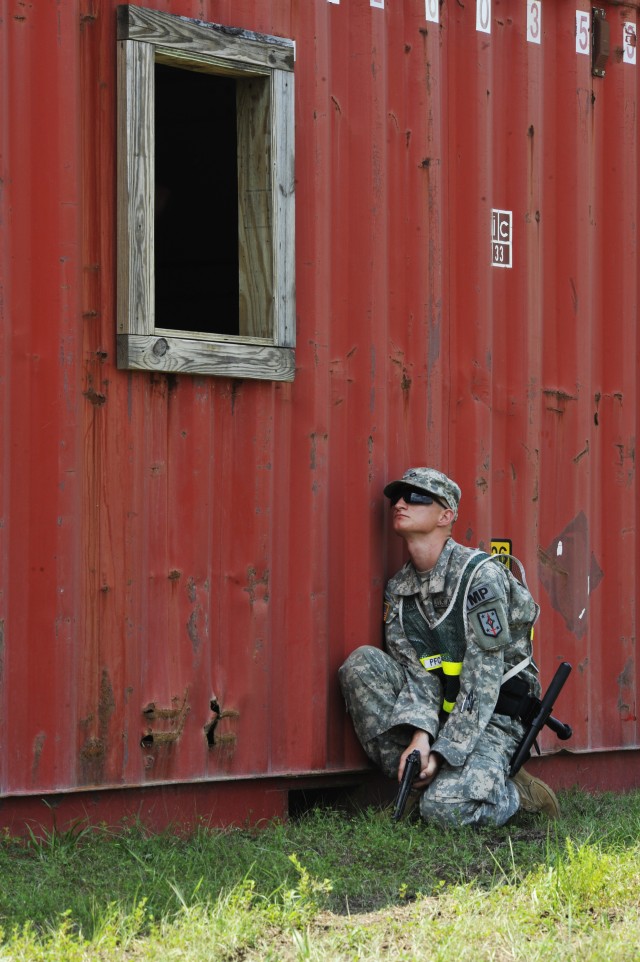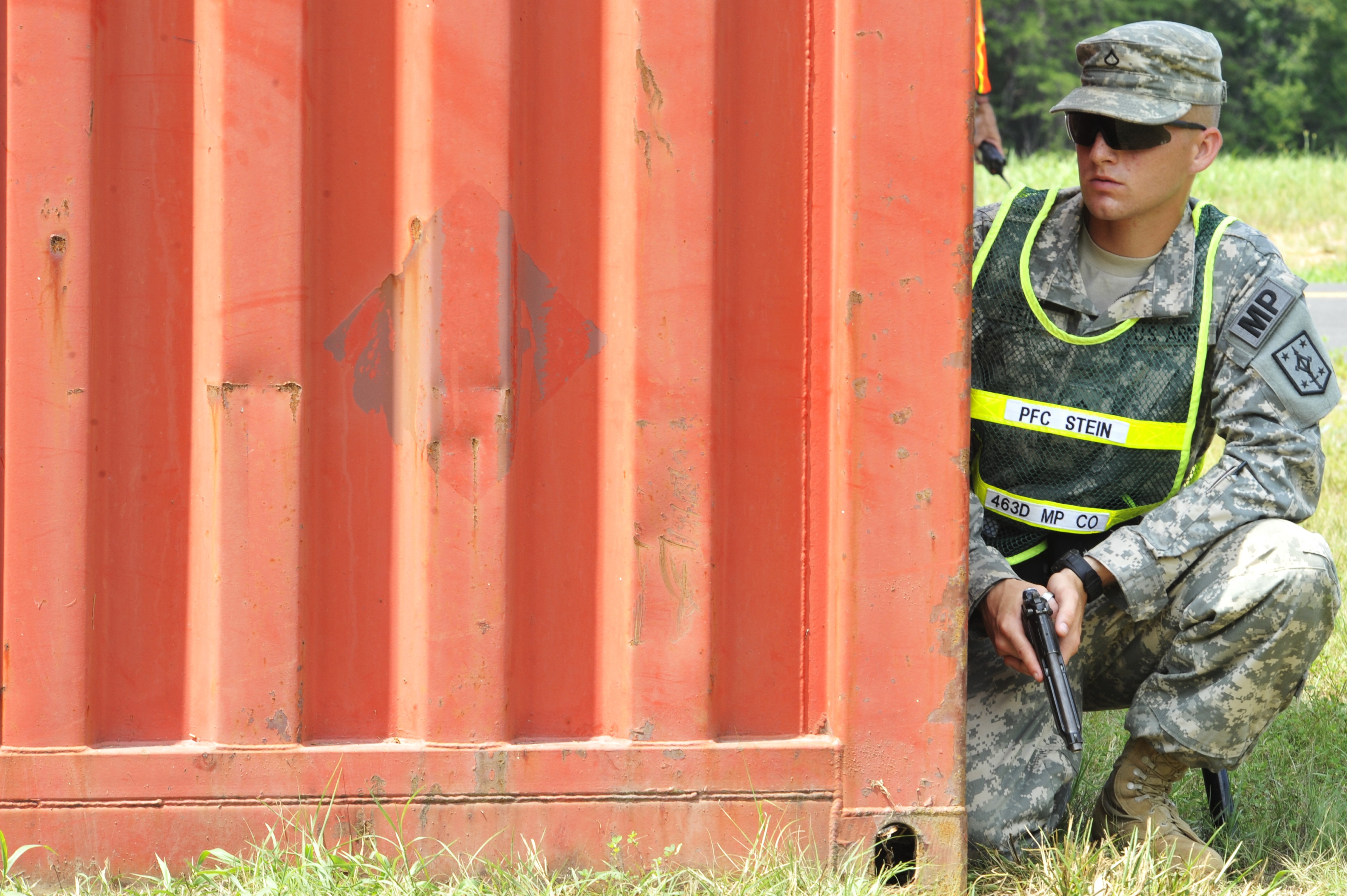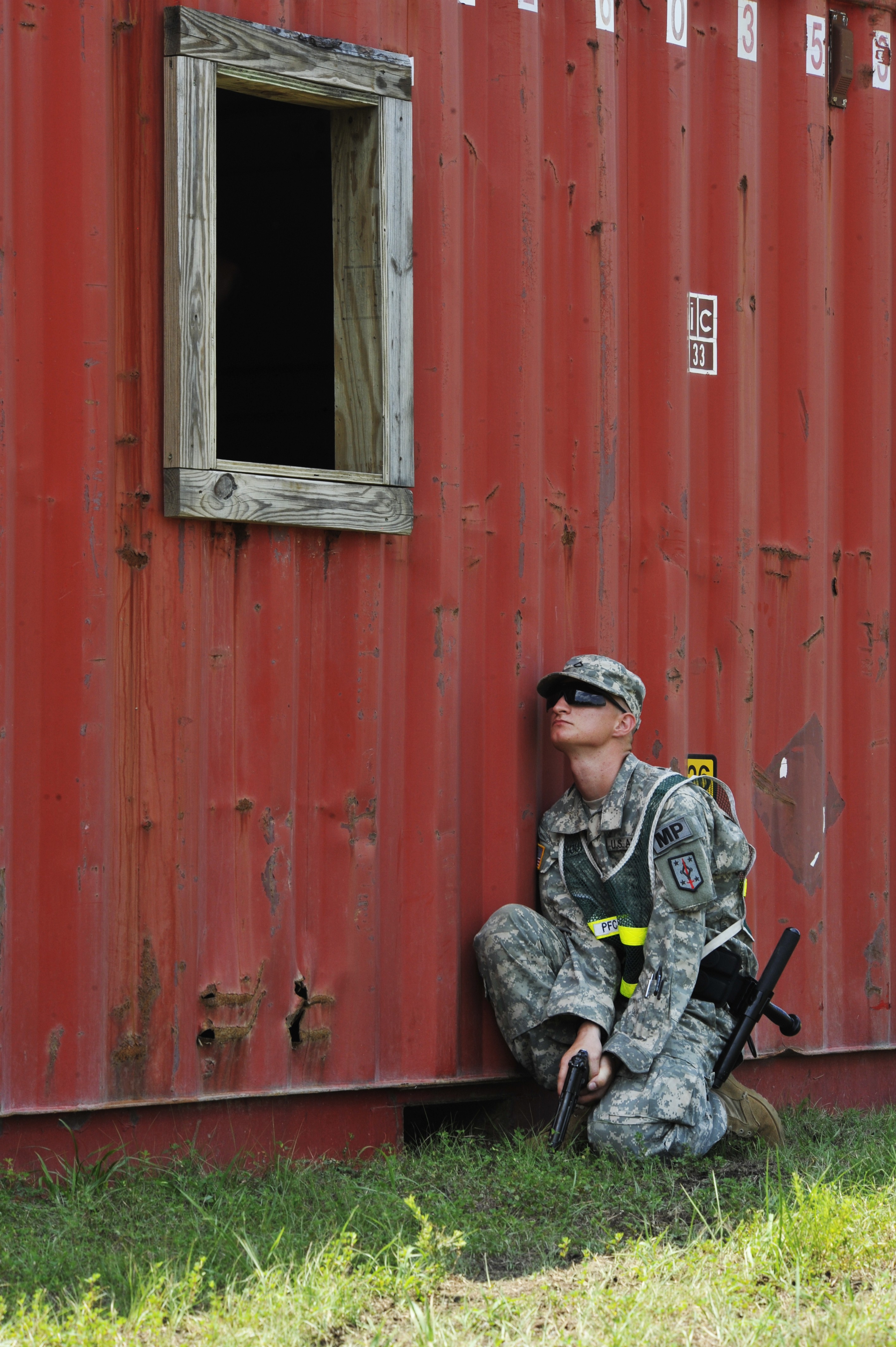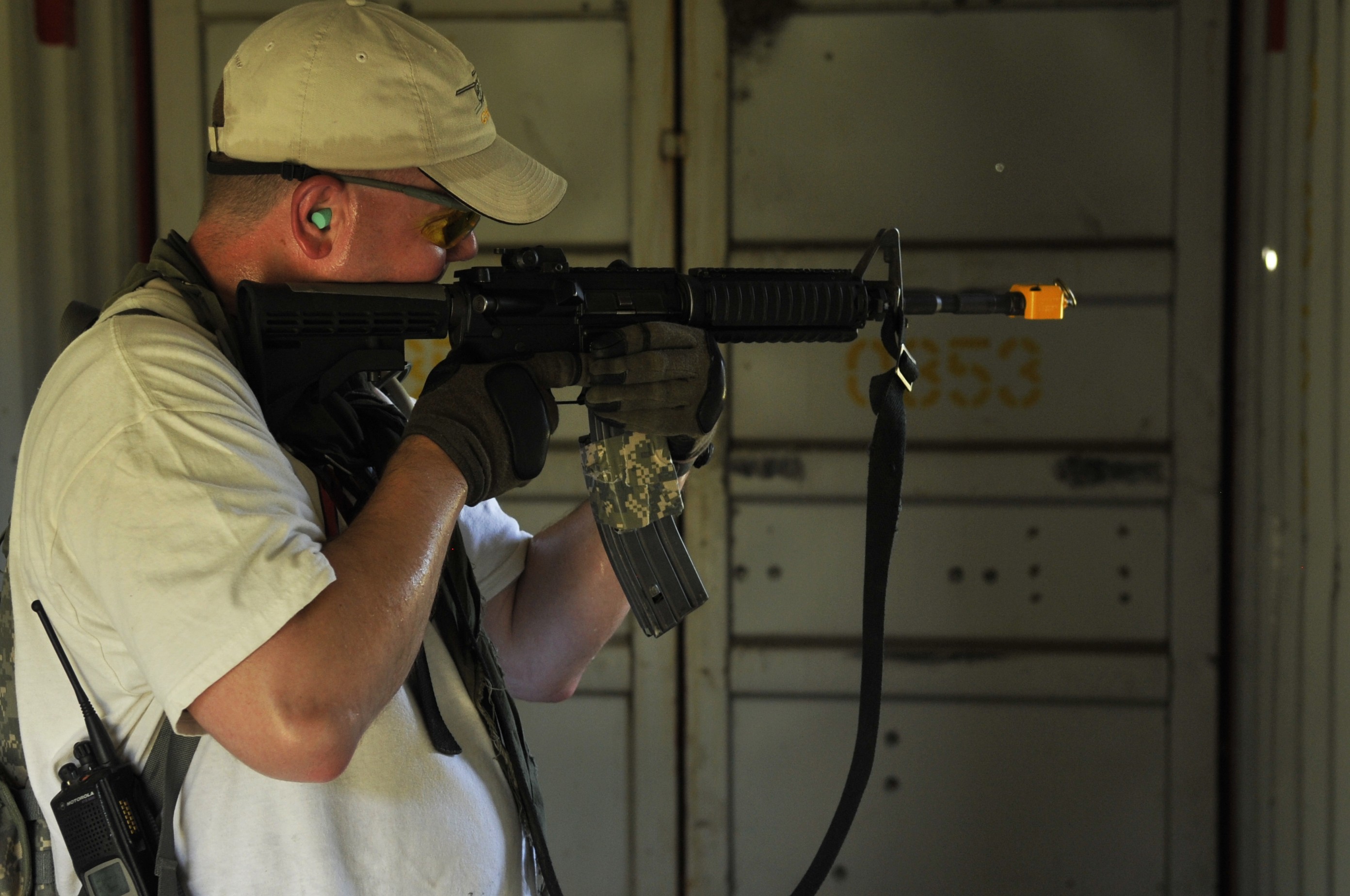FORT A.P. HILL, Va. - More than 35 first responders tested their ability to react under pressure to a simulated armed gunman during an active shooter exercise July 23 during preparations for the Boy Scouts of America's 2010 National Scout Jamboree, scheduled to run July 26 through Aug. 4.
The exercise simulated a disgruntled father in search of his children, forcing his way onto the post past Army military police members, guarding a mock-up of the Rappahannock gate, said Stephen Fogler, senior defense analyst at Standing Joint Force Headquarters, U.S. Northern Command. After fleeing his vehicle, the shooter opened fire on Soldiers and took a hostage in a small container, designed to mimic a visitor's control center.
"Between the extreme heat, the large number of Scouts and guests and the high operations tempo required to make the event a success, Jamboree combines a variety of stressors for personnel," Fogler said. "It's critical for our police to be able to respond quickly and make rational decisions to protect our guests."
During the scenario, the perpetrator, portrayed by Army Staff Sgt. Greg Small, simulated wounding three Soldiers with an AR-15 assault rifle before taking a hostage inside the container. A team of Army military police surrounded the small box, using negotiation and de-escalation tactics in an effort to mitigate further injuries or loss of life.
"It is critical to introduce stress into the situation to make it as realistic as possible," said Sergeant Small, a New Jersey National Guardsman from Company C, 114th Infantry. "In this situation, the conditions will make a shooter less rational as time passes. A cornered gunman in a sweltering room will get desperate and more dangerous."
Equally as important to resolving the conflict is the rapid and successful migration of wounded personnel to the nearest urgent care center, nearly seven miles across post at Wilcox Camp.
"The size of the installation creates more time for the situation to deteriorate," said Fogler. "Personnel must respond quickly to ensure any wounded personnel receive treatment as soon as possible.
While effectiveness, efficiency and rapid-response are key, Fogler said the exercise was more for training, not evaluation.
"The Jamboree brings together Title 10 and Title 32 service members from all branches who need to work together in a hectic environment," he said. "The BSA has been astonished with our abilities over the years, and we will continue our dedication to their safety."






Social Sharing